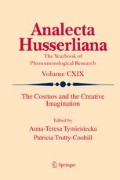Abstract
This paper examines the issue of ordinary consciousness and heightened consciousness addressed most famously in Friedrich Nietzsche’s Thus Spoke Zarathustra in which Zarathustra of heightened consciousness announces that “the time is coming when man will no longer give birth to a star.” Nietzsche’s “small man” of ordinary consciousness repeats the deadening of consciousness to the mystery of a star as “eternal return.” Two works of speculative fiction, Ouspensky’s Strange Life of Ivan Osokin and Eliade’s “The Secret of Dr. Honigberger” address Nietzsche’s dilemma (Osokin alludes to it) in terms of Eastern conceptions of fate and time. Thus repetition is a product of metaphysical and phenomenological stasis and “change” is an adjustment to the metaphysical and phenomenological nature of reality as such, what Nietzsche regarded as amor fati. Nietzsche’s breakthrough realization was expressed as being “six thousand feet beyond men and time.” The overall implication of these issues sets an opening of consciousness against a currently dominant objectifying of consciousness.
Access this chapter
Tax calculation will be finalised at checkout
Purchases are for personal use only
Notes
- 1.
Bela Tarr’s extraordinary film “The Turin Horse” (2011) is a dreamlike black and gray meditation on this incident.
- 2.
Zen Calendar, December 19, 2012.
References
Eliade, Mircea. 1970. Two strange tales. Boston: Shambhala.
Kaufman, Walter ed. 1961. Philosophic classics, Thales to St. Thomas. Englewood Cliffs: Prentice-Hall.
Kinslow, Dr. Frank J. 2012. The secret of quantum living. New York: Hay House.
Lama, Dalai. 1999. The path of tranquility: Daily wisdom. New York: Viking.
Nietzsche, Friedrich. 1978. Thus Spoke Zarathustra. Trans. Walter Kaufmann. New York: Penguin.
Nietzsche, Friedrich. 2013. Ecce homo: How one becomes what one is. Web. Lexido Classic Editions. 9 January 2013.
Ouspensky, P.D. 2004. Strange life of Ivan Osokin. Whitefish: Kissinger Legacy Reprints.
Qiu, Peipei. 2005. Basho and the Dao, The “Zhuangzi” and the transformation of Haikai. Honolulu: University of Hawai’i Press.
Qiu, Peipei, and Ross Bruce. 2008. The willing subject and the non-willing subject in the Tao Te Ching and Nietzsche’s hyperborean: Taoist and deconstructive challenges to the idea of virtue. In Venturing upon dizzy heights, Lectures and essays on philosophy, literature, and the arts. New York: Peter Lang.
Ross, Bruce. Haiku Canada review. (winter/spring 2013).
Rudgley, Richard. 1999. The lost civilizations of the Stone Age. New York: Touchstone.
Schiller, David (ed.). 2011. Zen Calendar. New York: Workman Publishing.
Snyder, Gary. 2004. Danger on peaks. San Francisco: Shoemaker Hoard.
The wisdom of the ZOHAR, an anthology of texts, vol. II, arranged by Fischel Lachower and Isaiah Tishby. Trans. Isaiah Tishby. Oxford: Oxford University Press, 1989.
Author information
Authors and Affiliations
Corresponding author
Editor information
Editors and Affiliations
Rights and permissions
Copyright information
© 2016 Springer International Publishing Switzerland
About this chapter
Cite this chapter
Ross, B. (2016). The Eternal Return: Time and Timelessness In P. D. Ouspensky’s Strange Life of Ivan Osokin and Mircea Eliade’s “The Secret of Dr. Honigberger”. In: Tymieniecka, AT., Trutty-Coohill, P. (eds) The Cosmos and the Creative Imagination. Analecta Husserliana, vol 119. Springer, Cham. https://doi.org/10.1007/978-3-319-21792-5_17
Download citation
DOI: https://doi.org/10.1007/978-3-319-21792-5_17
Publisher Name: Springer, Cham
Print ISBN: 978-3-319-21791-8
Online ISBN: 978-3-319-21792-5
eBook Packages: Religion and PhilosophyPhilosophy and Religion (R0)

